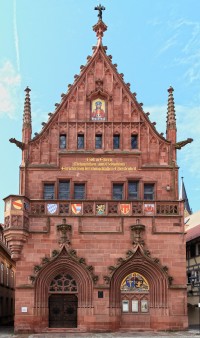Vorderseite: Büsten Luthers und Melanchthons nach rechts.
Umschrift: D. MARTIN . LUTHER . PHILIPP . MELANCHTHON. Darunter Künstlersignatur: D. (= Dockler)
Rückseite: Das „Himmlische Jerusalem“ unter dem Auge Gottes.
Umschrift: GOTT HILFT IHR FRVHE PS 46; darunter: A. C. Z. G. = [Augsburger Confession Zweites Gedächtnis] / 1730
Martin Luther (1483 – 1546) und Philipp Melanchthon (1497 – 1560)
en

